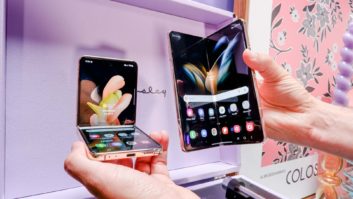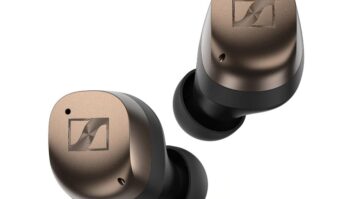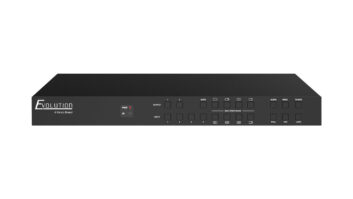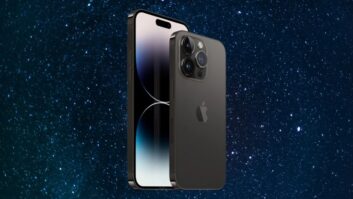NEW YORK — New features, better
performance, lower-cost pricing plans
from AT&T, and a financial incentive
to current iPhone users to upgrade to
the iPhone 4 will drive up iPhone sales
this year, but it’s not certain whether
Apple will continue to gain U.S. smartphone
share in the face of continued
AT&T network congestion and growing
competition from the Android OS,
some analysts said.
“The level of competition in the
North American smartphone market
continues to increase, and handsets like
Droid-branded phones from Verizon
Wireless, the Evo 4G from Sprint, and
upcoming handsets like the Samsung
Galaxy S will be an attractive alternative,”
said Strategy Analytics analyst
Alex Spektor. “AT&T has addressed
the issue of monthly data cost in order
to help its attractiveness, but congestion
remains an issue — especially in
areas like New York and the Bay Area
— which may cause potential iPhone
buyers to look elsewhere.”
iSuppli senior director Jagdish Rebello
said he believes the iPhone 4’s highresolution
“retina” display, iPhone 4-to
iPhone 4 video chat capability via Wi-Fi,
HD video recording, and high-flux LED
flash (comparable in intensity with Xenon
flashes but with no recharge time)
“will help drive some of the upgrade cycle
and bring in new users.” Given the
iPhone’s already large installed base and
Android’s competitiveness, however, he’s
not sure the growth momentum behind
the new iPhone will be as strong as it was
for previous-generation models.
All three of AT&T’s national competitors,
Rebello noted, offer Android
phones, and the OS “provides something
to counter” the iPhone. Although
“Android doesn’t lure customers from
Apple, it makes customers think twice
about jumping to another network
[AT&T].” “In many cases,” he noted,
“Android is as good as the iPhone.”
Another potential challenge facing
Apple in raising its market share, according
to a Nielsen Company survey,
is that given the iPhone’s larger
user base, “more iPhone consumers are
willing to try Android” than the other
way around. Nonetheless, 80 percent
of iPhone users want the iPhone OS
in their next smartphone, whereas 70
percent of Android users say the same
about their OS, the survey noted.
For now, demand for the iPhone 4 has
been strong, based on preordering volumes.
Consumers in five countries, including
the U.S., preordered more than
600,000 iPhone 4 smartphones on June
15, the first day the device became available
for preorder.
The unexpectedly high volume, Apple
admitted, caused Apple and carriers
to suffer “many order and approval
system malfunctions.”
In the U.S., AT&T said its pre-order
sales on June 15 were 10 times higher
than they were for the first day of
iPhone 3G S preordering.
Should growth in iPhone share stall despite initially strong demand, iPhone sales
nonetheless will likely continue to grow
because the overall U.S. smartphone market
is growing. “The capabilities of smartphones
are convincing more and more
consumers to make the leap from a simple
mobile phone to a more sophisticated device,”
said Nielsen Company analyst Don
Kellogg. He noted that 23 percent of U.S.
cellphone users owned a smartphone in
the first quarter, up from 16 percent in the
second quarter of 2009.
He also noted that the iPhone and
the Android OS both increased their
share of the smartphone user base by
2 percentage points in the first quarter
compared to the fourth quarter of
2009, bringing iPhone share to 28 percent
of all smartphones in use and Android
share to 9 percent. BlackBerry
share fell 2 percentage points to 35 percent,
and Windows Mobile share fell 2
points to 19 percent.
One development that could help
the iPhone continue to gain share is
AT&T’s launch of two less-expensive
smartphone data plans, priced at $15
and $25 per month for preset amounts
of data usage, and the elimination of the
company’s $29.99/month unlimiteddata
plan for new subscribers. The unlimited
plan had been the only data option
available for AT&T smartphones.
AT&T described the change as a
way to expand the potential smartphone
customer base, although analysts
also saw it as a way for AT&T to
control data usage by a small percentage
of subscribers — mainly iPhone
subscribers — who use a disproportionate
amount of data traffic and slow
data service for other users.
Although the new data options apply
to any AT&T smartphone, it incentivizes
smartphone users to jump to
the iPhone from other networks where
higher priced unlimited-data plans for
smartphones are the only option.
Current iPhone users who prefer to
keep their unlimited-data plans will be
allowed to if they trade up, an AT&T
spokeswoman added.
AT&T’s other incentive to keep the
iPhone’s share-growth momentum going
is the carrier’s decision to offer discounted
new-subscriber pricing to
existing iPhone users who would be eligible
for a discounted phone before the
year is out, analysts noted.
Feature upgrades will also drive iPhone
replacement sales, analysts said.













